- What Is A Telemedicine App?
- How Does A Telemedicine App Work?
- Market Value Of Telemedicine App 2024
- Types Of Telemedicine Apps
- The Popular Telemedicine Apps
- How Much Does The Telemedicine App Development Cost?
- Factors Affecting The Telemedicine App Development Cost
- Additional Factors That Affect Telemedicine App Development Cost
- Top 10 Must-have Features Of Telemedicine Mobile Apps
- Build An MVP To Optimize The Cost Of Telemedicine App Development
- How To Monetize A Telemedicine App?
- Conclusion
- How Idea Usher Can Be Your Telemedicine App Partner?
- FAQ
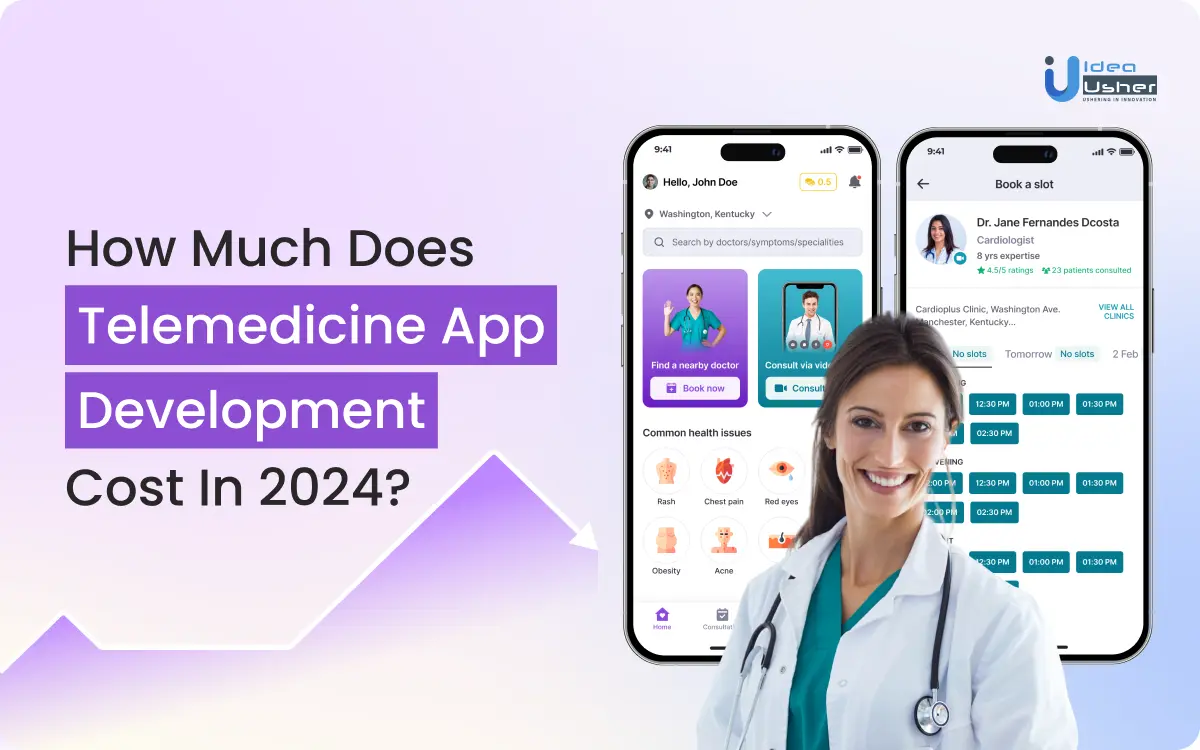
The healthcare industry is thriving with several types of Telemedicine apps that are becoming an essential part of our lives. These apps streamline virtual consultations, optimize chronic disease management, and enable proactive care through remote patient monitoring. Moreover, these secure and HIPAA-compliant platforms facilitate healthcare in remote areas and for those who are unable to visit a doctor in person and provide care even in emergency situations, thus dramatically changing the way healthcare is delivered. Given the significant impact of this advancement on healthcare providers, a crucial question comes to mind: What will be the investment necessary for telemedicine app development in 2024? This blog aims to be your go-to resource, outlining the key cost factors that influence the overall expense and empowering you to make well-informed decisions for your telemedicine app project.
- What Is A Telemedicine App?
- How Does A Telemedicine App Work?
- Market Value Of Telemedicine App 2024
- Types Of Telemedicine Apps
- The Popular Telemedicine Apps
- How Much Does The Telemedicine App Development Cost?
- Factors Affecting The Telemedicine App Development Cost
- Additional Factors That Affect Telemedicine App Development Cost
- Top 10 Must-have Features Of Telemedicine Mobile Apps
- Build An MVP To Optimize The Cost Of Telemedicine App Development
- How To Monetize A Telemedicine App?
- Conclusion
- How Idea Usher Can Be Your Telemedicine App Partner?
- FAQ
What Is A Telemedicine App?
A telemedicine app is a software application that allows users to connect with a doctor remotely via phone or other internet-enabled device. This app comes handy for situations like:
- When someone is sick but it’s not an emergency
- If user lives in a remote area and don’t have easy access to a doctor in person
- There’s a need for quick consultation to discuss a minor issue
These telemedicine apps typically allow for video chats with doctors, so they can analyze their patient and get a better sense of the condition and situations. Such app may also include features like:
- Secure messaging to communicate with your doctor
- Transferring media
- Prescription refills, etc. (we have listed the features in detail later in this blog)
There are a number of popular telemedicine apps available that allow you to connect with doctors virtually. These include Teladoc Health, Vezita, Amwell, Talkspace, BetterHelp, Zocdoc, GoodRx Care, K Health, Doctor on Demand, MDLive, etc. These apps are typically free to download but the specific services offered in the app and their costs can vary depending on your location and insurance plan.
While telemedicine apps are a great option for several things, it must be kept in mind that they aren’t always suitable. For serious medical conditions or emergencies, patients still need to visit a doctor in person.
How Does A Telemedicine App Work?
A telemedicine app works by virtually connecting patients to healthcare providers through a secure online platform. Here’s a detailed look at how these apps function for both patients and doctors:
Telemedicine App For Patients
- Find a Doctor: Patients can search for healthcare providers based on specialty, location, and reviews from other patients. This helps them choose the right doctor for their needs.
- Schedule an Appointment: Booking appointments is simple. Patients can select a convenient time for their virtual consultation directly within the app.
- Virtual Consultations: Patients can have live video or audio consultations with doctors. This allows them to discuss health concerns just like they would in an in-person visit.
- Secure Messaging: For follow-up questions or non-urgent issues, patients can send secure messages to their doctors. This feature ensures privacy and timely responses.
- Health Data Management: Some apps let patients track their health data, such as vital signs and symptoms. This information can be shared with doctors during consultations for better care.
Telemedicine App For Doctors
- Manage Patient Profiles: Doctors can view and update patient medical histories, lab results, and treatment plans. This helps them provide informed and personalized care.
- Appointment Scheduling: Doctors can manage their availability and appointment slots. This ensures a smooth booking process for patients and efficient schedule management for doctors.
- Conduct Virtual Consultations: During virtual visits, doctors can discuss symptoms, review health records, and provide medical advice. High-quality video and audio ensure effective communication.
- Prescription Management: Doctors can generate electronic prescriptions and send them directly to pharmacies. This makes it easy for patients to get their medications.
- Clinical Documentation: Doctors can record notes on patient interactions, diagnoses, and treatment plans. This ensures accurate records for future reference and ongoing care.
Market Value Of Telemedicine App 2024
The global telemedicine industry reached a value of USD 114.98 billion in 2023. Analysts project a significant increase at a compound annual growth rate (CAGR) of 17.96% between 2024 and 2030.
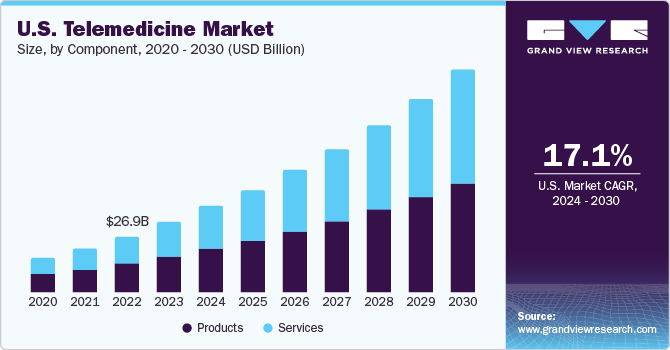
This expansion is fueled by several factors, including the merging of companies within the telemedicine space, strategic actions taken by leading players, and a growing trend of patients taking a more active role in managing their healthcare.
Moreover, according to another report, experts predict a surge in the telemedicine market, anticipating it to exceed USD 590.9 billion by 2032. This translates to a remarkable compound annual growth rate (CAGR) of 25.7% between 2023 and 2032.
Types Of Telemedicine Apps
Telemedicine apps come in various forms, each designed to address specific healthcare needs. Here are the different types of telemedicine apps and their unique functions:
1. Live Video Consultation Apps
These apps enable real-time video interactions between patients and healthcare providers. They are ideal for virtual consultations and allow doctors to assess and advise patients remotely, similar to an in-person visit.
2. Store-and-Forward Apps
Store-and-forward apps allow the transmission of patient information, such as medical images and records, to specialists at different locations. This communication helps in consulting specialists without the need for simultaneous availability, improving efficiency and access to expertise.
3. Remote Patient Monitoring (RPM) Apps
RPM apps facilitate the remote monitoring of patient’s health metrics. Patients can log data such as blood pressure, glucose levels, and heart rate, which is then shared with their healthcare providers. This continuous monitoring helps manage chronic conditions and detect potential health issues early.
4. Mobile Health (mHealth) Apps
Mobile health apps offer a range of health services via mobile devices. These can include fitness and wellness trackers, dietary and nutritional advice, exercise routines, and medication reminders, promoting overall health management.
5. Patient Care Apps
Patient care apps streamline various aspects of patient management. Features include appointment scheduling, medication reminders, and access to personal health records, making it easier for patients to manage their healthcare needs.
6. Healthcare Administration Apps
These apps focus on administrative tasks within healthcare facilities. They handle billing, scheduling, patient records management, and other administrative functions while improving operational efficiency and reducing paperwork.
7. Public Health Apps
Public health apps are designed to monitor and manage public health data. They track disease outbreaks, vaccination records, and health trends, helping public health officials and organizations in planning and response.
8. Research And Data Collection Apps
These apps support medical research by facilitating data collection and conducting surveys. Researchers can gather real-time data from a wide user base, which is crucial for clinical studies and public health research.
9. Provider Education Apps
Provider education apps offer ongoing training and educational resources for healthcare professionals. They provide access to the latest medical research, clinical guidelines, and interactive training modules and ensure that providers stay informed and up-to-date with current practices.
10. Specialized Care Apps
Specialized care apps cater to specific healthcare needs, such as mental health, physical therapy, or chronic disease management. These apps offer targeted services and support, including therapy sessions, rehabilitation exercises, and management plans tailored to individual conditions.
The Popular Telemedicine Apps
Here are five leading telemedicine apps, each excelling in different areas of healthcare:
1. Teladoc Health
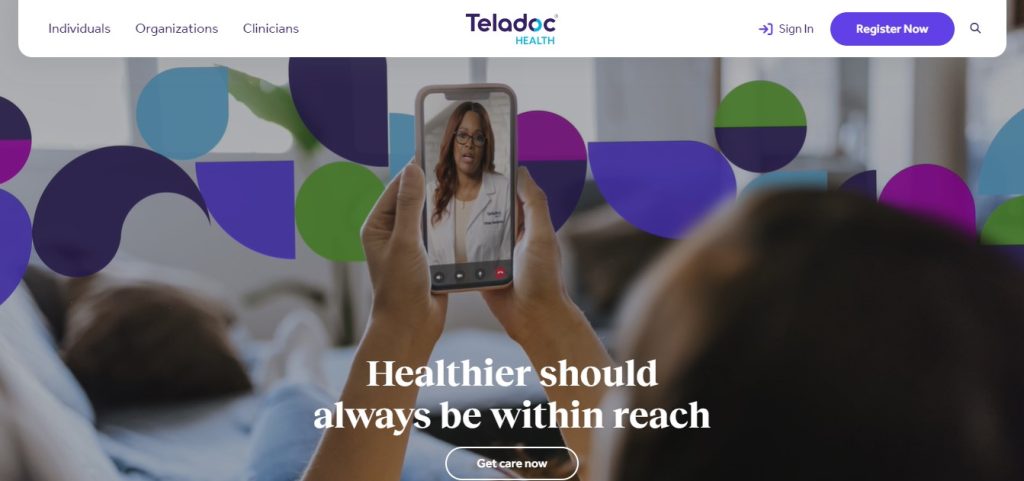
Teladoc Health provides 24/7 access to board-certified doctors through phone or video consultations. This app is perfect for diagnosing and treating non-emergency conditions such as flu, infections, and minor injuries. Additionally, Teladoc can order lab tests, prescribe medications, and offer referrals to specialists. The app’s comprehensive coverage ensures that patients receive timely and efficient care whenever they need it.
2. Amwell
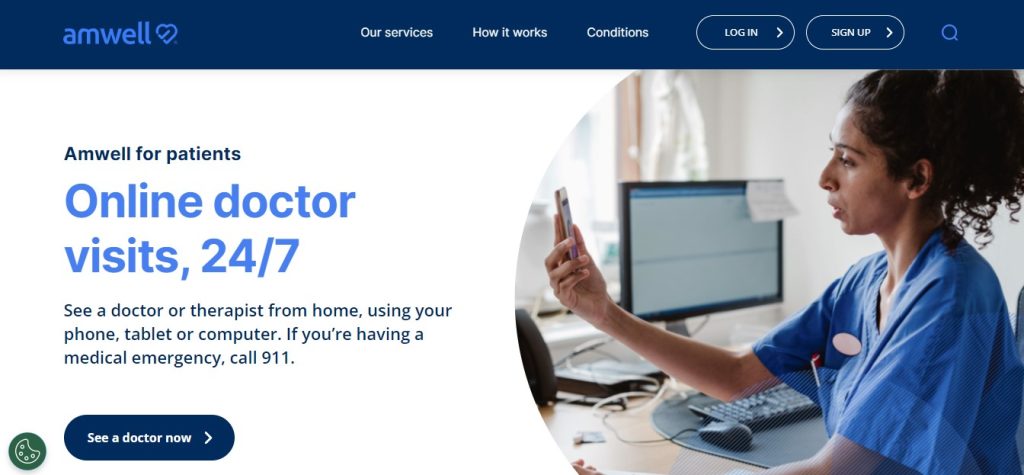
Amwell is a versatile telemedicine app that connects patients with doctors via secure video visits. This interactive approach enhances the consultation experience, making it feel more personal. Amwell covers a broad range of healthcare services, including urgent care and chronic condition management. It also excels in mental health services, providing access to licensed therapists for counseling and therapy sessions, making it a robust option for health management.
3. Talkspace
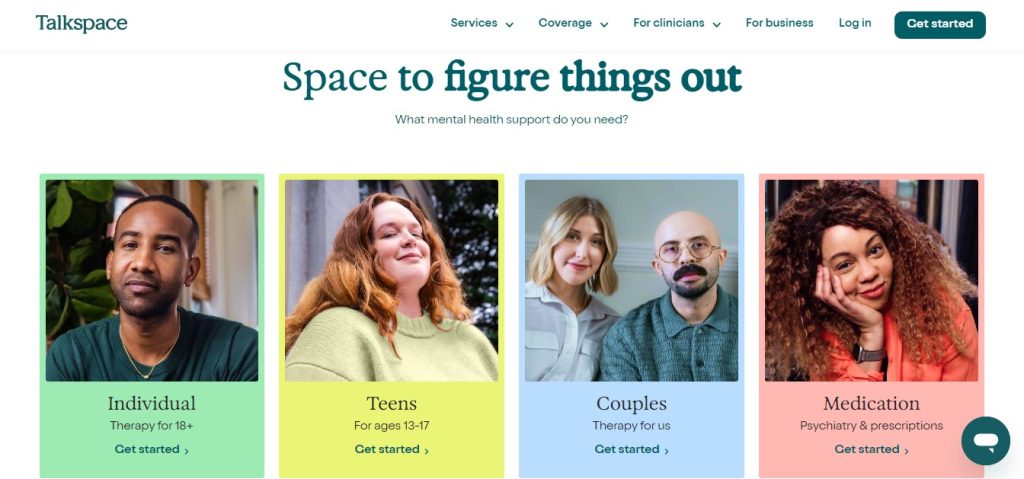
Talkspace is dedicated to mental health support, offering convenient access to licensed therapists through chat, video sessions, and messaging. This app is ideal for individuals seeking ongoing therapy without the need for in-person visits. Talkspace provides various plans to suit different needs and budgets, making mental health care more accessible and affordable. It’s an excellent choice for anyone looking for consistent, professional mental health support.
4. LiveHealth Online
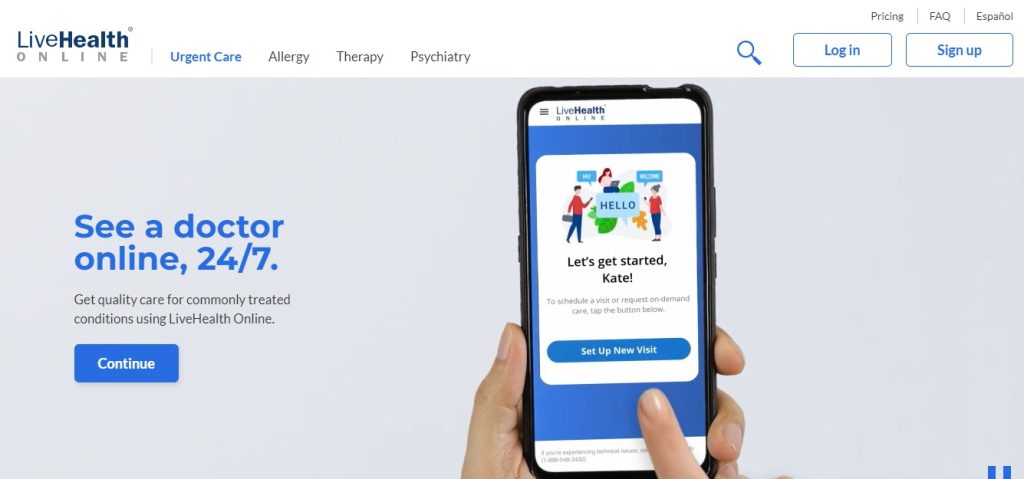
LiveHealth Online focuses on connecting patients with mental health professionals. The app offers therapy sessions with licensed therapists and psychiatry services for medication management. This specialized approach ensures that patients receive targeted mental health care, whether they need talk therapy or psychiatric consultations. The ease of accessing mental health services through LiveHealth Online makes it a valuable resource for those seeking mental wellness support.
5. MyChart
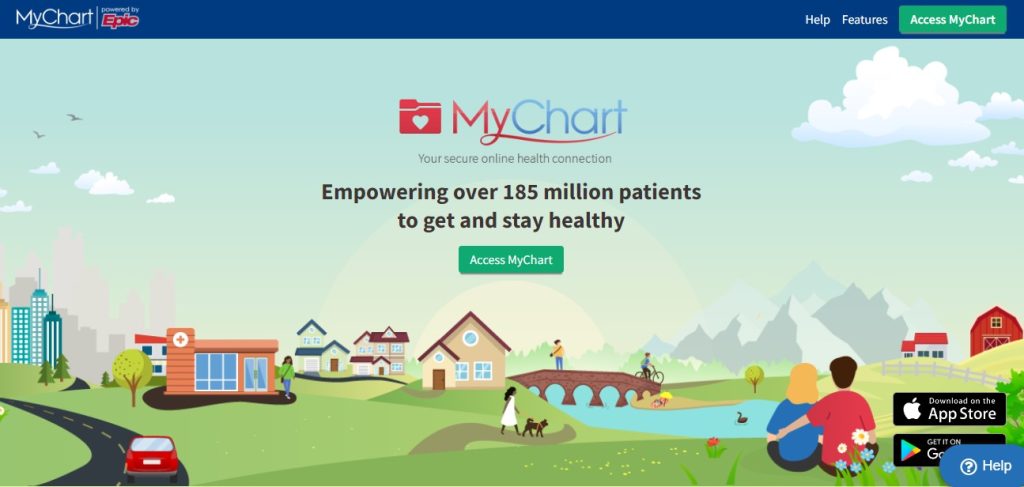
MyChart is primarily known as a patient portal, but it also includes telemedicine capabilities. Patients can securely access their medical records, schedule appointments, and communicate with their healthcare providers. Some providers using MyChart offer video chat consultations, adding an extra layer of convenience. MyChart’s integration with a patient’s existing healthcare network makes it a seamless tool for managing health and accessing telemedicine services when needed.
How Much Does The Telemedicine App Development Cost?
The cost of developing a telemedicine app can vary widely, depending on the complexity of the app, the features you choose to include, and the design and technology stack used. Here’s a detailed breakdown of the costs involved in developing different types of telemedicine apps:
Cost Estimation Based On App Types
Table below demonstrates the approximate cost required to develop a basic, medium and complex telemedicine app:
| App Type | Estimated Cost | Development Time |
| High Complex Telemedicine App | $80,000 – $170,000 | 11+ months |
| Medium Complex Telemedicine App | $30,000 – $80,000 | 5 – 11 months |
| Simple Telemedicine App | $20,000 – $30,000 | 3 – 5 months |
Note: These are estimated costs, and the actual price may vary depending on the several factors listed in the next section.
Time Required To Build The Telemedicine App (In General)
Table below demonstrates the approximate time required to develop a basic telemedicine app:
| Feature | Doctor/Admin Panel (hr.) | Patient App (hr.) |
| Registration/Login | 20-25 | 20-25 |
| Search/Filter Functionality | 15-25 | 20-25 |
| Appointment Scheduling | 25-30 | 25-35 |
| Profile Management | 15-25 | 15-25 |
| Video Consultation | 25-40 | 25-40 |
| Messaging/Chat | 15-20 | 15-20 |
| Health Records | 30-40 | 35-45 |
| Prescription Management | 20-35 | 20-30 |
| Notifications | 10-25 | 10-25 |
| Payment Integration | 15-20 | 15-20 |
| Settings & Configuration | 15-20 | 15-20 |
| User Management | 20-30 | – |
| Analytics/Reports | 25-30 | – |
| Admin Dashboard | 30-50 | – |
Cost Per Hour To Build The Telemedicine App Across Countries
Table below demonstrates the average cost to develop a basic telemedicine app based on region:
| Region | Average Hourly Rate |
| USA | $100 – $150 |
| UK | $80 – $120 |
| India | $25 – $40 |
| Canada | $90 – $140 |
| Germany | $70 – $110 |
| UAE | $50 – $80 |
Factors Affecting The Telemedicine App Development Cost
Developing a telemedicine app involves several factors that influence the overall cost. Understanding these factors helps in making informed financial decisions and managing risks effectively. Below are the key factors that impact the cost of telemedicine app development:
| Team Type | Approximate Cost |
| Freelancers | $35,000 – $40,000 |
| Outsourced Development Company | $65,000 – $80,000 |
| In-House Team | $150,000 – $180,000 |
| Local Development Company | $200,000 – $230,000 |
1. App Platform
The choice of platform between iOS, Android, or both can drastically affect development costs. Usually, developing for Android is generally more expensive due to its larger user base and device fragmentation. To optimize costs, it’s advisable to start with a single platform and expand to cross-platform development as the app gains traction.
2. App Development
The cost of the development phase is determined by the number of coding hours and the hourly rates of developers. In this case, the type of development team also plays an important role. Here’s a rough estimate based on team types:
Here, we can say that outsourcing project development to experienced companies often offers a balance between cost and quality along with a comprehensive telemedicine solution.
3. Feature List
The complexity and number of features are primary cost drivers. A basic telemedicine app with essential functionalities like user registration, scheduling, and video consultations might cost between $40,000 and $55,000. However, more advanced features like AI diagnostics, remote monitoring, and comprehensive data analytics can significantly increase the overall cost. Investing in a feature-rich app can provide you with a competitive edge and justify the higher expenditure.
4. UI/UX Design
A well-designed user interface and user experience (UI/UX) can enhance user engagement and retention way better than you can imagine. A visually appealing and intuitive design undergoes extensive testing and, in the end, ensures that the app resonates with the brand’s identity and meets user expectations. So here, depending on whether the app needs to be designed from scratch or just needs to be updated, the design phase can impact the overall cost significantly.
5. Wireframe
Creating a wireframe involves mapping out the app’s architecture and user flows. This blueprint is important for seamless development and requires multiple iterations and testing to ensure functionality. The cost of wireframing can range from $100 to $4,000, based on its complexity and the number of testing cycles.
6. Tech Stack
The choice of technologies used (programming languages, frameworks, databases) affects the app’s scalability and performance, thereby influencing the cost. For app development, a tech stack helps ensure a seamless user experience and the capability to handle a large user base, which can justify higher initial costs.
7. Third-party Integrations
Integrating your telemedicine app with existing eHealth systems such as lab systems, Electronic Health Records (EHRs), or Internet of Things (IoT) devices is important. These integrations create a digital healthcare environment, however, incorporating multiple integrations can increase the complexity and cost of telemedicine app development.
The cost for basic integrations can range from $10,000 to $30,000 and these may include appointment scheduling, payment gateways and email notifications. For more advanced integrations, the cost can gradually increase up to $100,000. This advanced integration may involve EHR/EMR systems, Artificial Intelligence (AI), Machine Learning (ML), and telehealth devices or wearables. These integrations enhance the functionality of your app but require additional investment.
8. Team Size
A larger and more experienced team can deliver high-quality apps more efficiently but at a higher cost. A typical development team might include 1 Project Manager, 2 Backend Developers, 2 iOS/Android Developers, 1 Designer, 1 or 2 Quality Analysts. Larger teams do appear costlier but it ensures comprehensive expertise and better outcomes.
9. Location Of Development Team
Geographical location significantly impacts development costs. For example, hiring developers in Asia is generally cheaper than in the US or Europe. We have already created an estimated table for you in the above section that includes the approximate cost breakdown by region.
In a nutshell, developing a telemedicine app in India is easier on your wallet than in other places. India has a large pool of talented developers, and thus, it is a cost-effective choice.
10. Maintenance
Post-launch maintenance includes updates, new feature integrations, and adaptations to changing market trends. These ongoing costs vary based on the complexity of the app and the frequency of updates required.
Bonus: Cost Of Development Based On Telemedicine App Type
The cost of developing telemedicine apps varies based on their type. Synchronous telemedicine apps, such as Amwell, Doctor on Demand, and Teladoc, facilitate real-time interactions through video consultations, phone calls, and secure messaging, with development costs ranging from $70,000 to $150,000. On the other hand, asynchronous telemedicine apps, like 98point6, Maple, and HeyDoctor, allow patients and healthcare providers to communicate at their convenience without simultaneous interaction, costing between $70,000 and $120,000. Apart from these, remote monitoring apps that include Livongo, Omada Health, and MyChart enable patients to monitor health parameters such as vital signs and chronic conditions via smartphones or smart devices. The development of such apps ranges from $90,000 to $200,000. So, we can conclude here that each app type serves different purposes and includes different features, thus easily impacting the overall development cost.
Additional Factors That Affect Telemedicine App Development Cost
When calculating the cost of developing a telemedicine app, several additional factors must be considered beyond the core features and functionalities:
1. Telemedicine Adoption And Change Management
To avoid underutilization of your telemedicine app, it’s important to invest in change management strategies. Implementing comprehensive training programs and user adoption initiatives can promote acceptance among healthcare providers, staff, and patients. These efforts are vital for integrating the app seamlessly into existing workflows and ensuring its effective use.
2. Data Migration And System Integration
Transferring healthcare data from legacy systems to your new telemedicine app can be complex and costly. The process involves data mapping, cleansing, and addressing interoperability challenges. Therefore, proper planning and assessment are essential to ensure a smooth migration and integration that further impacts the overall development cost.
3. Medical Data Analytics And Reporting
Incorporating data analytics and reporting features in your telemedicine app enhances its functionality. Developing algorithms for data analysis, creating reporting dashboards, and generating medical insights are necessary for delivering high-quality care. Tracking usage metrics, clinical outcomes, patient satisfaction, and operational performance requires additional development efforts and expertise in data visualization while increasing the cost.
4. Localization And Multilingual Support
To make healthcare accessible to a diverse patient population, your telemedicine app should support multiple languages and cultural nuances. Localizing user experience and app content to accommodate different health practices and sensitivities can improve patient loyalty and accessibility. However, this diversification adds to the development cost but is essential for broader user engagement.
5. Software Improvement And Updates
Allocating a budget for ongoing software maintenance and support is important. Post-launch updates, bug fixes, and technical support services ensure your telemedicine app remains up-to-date, secure, and compliant with evolving healthcare regulations and technological advancements. Although it increases the initial development costs, but the continuous support minimizes future performance and reliability issues while safeguarding your investment over time.
Top 10 Must-have Features Of Telemedicine Mobile Apps
Here are the must-have features of a telemedicine mobile application along with their estimated development cost:
1. User-friendly Interface And Authentication
When we talk about the user-friendly interface, we hint at a simple and intuitive design that enhances user experience, combined with secure login methods to ensure data privacy and protection.
- Estimated Cost Range: $3,000 – $5,000
2. Real-time Video Consultations
This enables high-quality video and audio communication for remote consultations between patients and healthcare providers. This feature facilitates effective and timely medical advice.
- Estimated Cost Range: $8,000 – $12,000
3. Appointment Scheduling And Reminders
This feature provides a convenient system for booking appointments with automatic reminders to reduce no-shows and improve patient attendance.
- Estimated Cost Range: $4,000 – $6,000
4. API Integration
API integration enables connection and integration with third-party systems such as EHRs while enhancing the functionality and interoperability of the application.
- Estimated Cost Range For Any API: Additional $4,000 – $7,000
- Estimated Cost Range For EHR integration: $6,000 – $9,000
5. Prescription And Medication Management
This feature enables the creation and management of e-prescriptions and provides medication reminders to patients. Moreover, it helps in improving adherence to treatment plans.
- Estimated Cost Range: $5,000 – $8,000
6. Secure Messaging And File Sharing
It ensures safe and confidential communication between patients and healthcare providers. This feature allows the exchange of files and medical documents between both parties.
- Estimated Cost Range: $4,000 – $6,000
7. Multi-Platform Compatibility
This feature ensures that the application is accessible on various devices, including smartphones, tablets, and web browsers. Moreover, this multi-device compatibility offers flexibility and convenience to users.
- Estimated Cost Range: $3,000 – $5,000
8. Telehealth Analytics
This feature provides insights into app usage and patient satisfaction. It helps healthcare providers to improve services and patient care through data-driven decisions.
- Estimated Cost Range: $5,000 – $7,000
9. Telemedicine Marketplace
A marketplace allows patients to browse and select healthcare providers based on specialties and other criteria. This feature makes it easier to find the right medical expertise.
- Estimated Cost Range: $7,000 – $10,000
10. Admin Dashboard
This is a management tool for administrators to oversee appointments, user accounts, and analytics. It enables efficient operation and monitoring of the system.
- Estimated Cost Range: Additional $7,000 – $10,000
Build An MVP To Optimize The Cost Of Telemedicine App Development
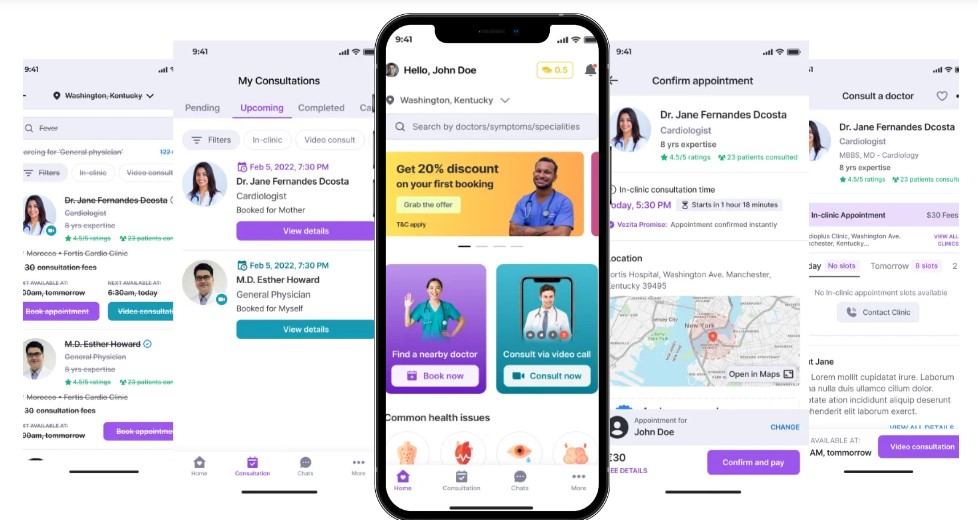
Developing a Minimum Viable Product (MVP) for a telemedicine app is a strategic approach to enter the market efficiently. With this you can focus on essential features and utilize iterative development to manage costs effectively while meeting user needs. Here’s how to optimize the cost of your telemedicine app development:
1. Focus On Essential Features
Prioritizing features that address core user requirements like user registration, video consultations, prescription management, and appointment scheduling should be the foundation of your MVP. These features provide the necessary tools for both patients and healthcare providers and ensure a functional and valuable product from the start.
2. Adopt Iterative Development Practices
Implement a strategy of releasing your app in phases, each with incremental improvements based on user feedback. This approach allows you to refine your product continuously and adapt to user preferences and market dynamics. By focusing on iterative updates, you can minimize initial development costs and allocate resources more effectively over time.
3. Simplify Feature Complexity
Begin with a simplified version of your app to manage costs. Here you can avoid incorporating too many advanced features initially; instead, you can focus on delivering a reliable product that meets basic user needs. Moreover, as you gather user feedback, you can gradually add more complex features based on that. This method helps in controlling costs and reduces the risk of overcomplicating the initial release.
4. Evaluate Development Approaches
It is important to decide between in-house development and outsourcing based on your specific needs and resources. In-house development offers more control over the process and product quality, whereas outsourcing can be more cost-efficient and provide access to specialized expertise. For the ultimate and cost-effective decision, you can evaluate the pros and cons of each approach to determine the best fit for your project.
5. Choose The Right Platform
Select the appropriate platform—whether iOS, Android or a cross-platform solution as it affects both development costs and time. A cross-platform solution can be more economical, allowing you to reach a wider audience with a single codebase. However, if your target audience mostly uses one platform, focusing on that platform first might be a more strategic move.
6. Ensure Security And Compliance
HIPAA compliance and security measures can increase costs, but these elements are not negotiable in any healthcare app. You must invest in secure authentication methods, data encryption, and regular security audits to protect patient data. Even for the basic apps, prioritizing security from the beginning helps avoid costly breaches and compliance issues down the line.
7. Minimize Initial Integrations
Limit third-party integrations in your MVP to essential services only. Each integration adds complexity and cost to the development process. Thus, you must focus on integrating only those services that are critical to your app’s functionality, such as payment gateways or basic EHR systems. However, additional integrations can be added later as the app evolves and based on user feedback.
8. Build Early Partnerships
Collaborating with healthcare providers, insurance companies, or other relevant stakeholders can help offset development costs. In most cases, early partnerships usually provide financial support, access to valuable resources, and increased credibility for your app. These collaborations can also enhance the app’s functionality and user experience through integrated services and shared expertise.
How To Monetize A Telemedicine App?
The monetization of a telemedicine app can be achieved through various strategies. Here are some of the most effective ones:
- Provide basic services at no cost but charge for access to additional features or services. This is called monetizing with a freemium approach. This model can attract a large user base and potentially convert a portion of them into paying customers.
- You can opt for a premium model where users pay upfront to download the app. This approach is suitable for specialized apps targeting a specific audience. However, it might limit the user base and revenue potential.
- You can offer premium services or features for a recurring fee with a subscription-based model. This can generate significant revenue in a short time.
- Encourage user engagement by incorporating game-like features that promote healthy habits. This process is called gamification and it can enhance the user experience and potentially increase revenue.
- You can also generate revenue through in-app advertisements and purchases.
Conclusion
As a healthcare provider, you’re well aware of the growing need for convenient and accessible care. A telemedicine app can be your game-changer, empowering you to reach more patients and provide efficient consultations.
But remember, building a successful app requires a focus on core functionalities and strategic planning. So, by prioritizing an MVP and optimizing development costs, you can create a cost-effective solution that benefits both you and your patients. So, are you ready to transform healthcare delivery? Let’s discuss how we can bring your telemedicine vision to life!
How Idea Usher Can Be Your Telemedicine App Partner?
Idea Usher is a leading app development firm specializing in creating high-performing telemedicine solutions. We guide you through every step, from cost estimation to feature planning and launch strategy. Our proven track record and experience of 50,000+ hours ensures your app delivers a strong ROI. We recently developed a telemedicine app called Vezita, along with several other healthcare projects, that boosted intensive healthcare by 80%. At Idea Usher, our team prioritizes user-centric design and utilizes cutting-edge technology to build apps that make a real difference. So, contact us today and let’s turn your telemedicine vision into a functioning app.
FAQ
How much does it cost to make a telemedicine app?
The cost of a telemedicine app depends on complexity. A basic app with features like appointment booking and video chat might cost around $40,000-$55,000, while a high-end platform with features like remote patient monitoring could reach $200,000+.
How much does a telehealth platform cost?
Telehealth platform costs are similar to telemedicine app costs. The complexity of features like diagnostics and integrations with medical devices will influence the final price.
How much does healthcare app development cost?
Healthcare app development costs also vary depending on features. Expect a basic app to cost around $40,000, while complex apps with features like appointment scheduling, prescription management, and wearables integration can reach $200,000 or more.












Rebecca Lal